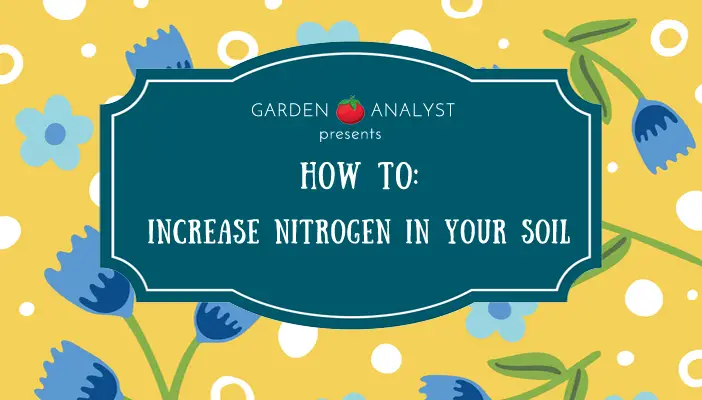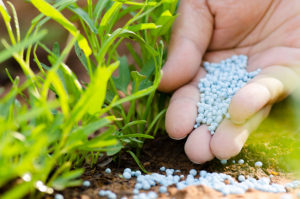If your soil starts to lack the Nitrogen it needs – you will need to add a high nitrogen fertilizer as soon as possible. Since Nitrogen is a core nutrient required for plant growth, ensuring you have the appropriate amount is critical. In this article, we will discuss the effects of a nitrogen deficiency and how to increase nitrogen in soil.


Effects of low Nitrogen levels soil
Nitrogen deficiency in your plants can be most commonly identified by:
- Yellowing of your leaves (chlorosis)
- Lack of flowering and fruits
- Plants look thin and pale
Once you determine that in fact your soil is lacking nitrogen, there are 2 paths you can go: organic or inorganic(synthetic).
I always choose organic as my first choice, but I understand it is not always feasible. Let’s now look at ways we can increase nitrogen in soil.
Correcting A Nitrogen Deficiency Organically
Luckily, there are plenty options if you enjoy keeping things organic. Here are 4 methods to increase nitrogen levels in your soil:
- Manure – adding manure is one of the simplest ways to amend your soil with nitrogen. Be careful as there are various types of manures with varying degrees of nitrogen.
- Coffee grinds – use your morning addiction to feed your gardening habit! Coffee grinds are considered a green compost material which is rich in nitrogen. Once the grounds break down, your soil will be fed with delicious, delicious nitrogen. An added benefit to including coffee grounds to your soil is while it will compost, it will also help provide increased drainage to your soil.
- Plant nitrogen fixing plants – planting vegetables that are in Fabaceae family like peas, beans and soybeans have the ability to increase nitrogen in your soil
- Plant ‘green manure’ crops
Correcting A Nitrogen Deficiency with Synthetics
The simplest way to treat a nitrogen deficiency inorganically is by using chemical fertilizers. Some of the large brand names that you are probably aware of are names such as Miracle-Gro. In order to select the correct fertilizer for your needs, you first need to understand fertilizer basics.
You want to select a fertilizer that contains the higher first number that you see on the bag. For example, you will see a series of 3 numbers(e.g. 15-10-10) that represent the various compounds in the fertilizer. The first one is the nitrogen concentration, which in this case is 15%. This means it will be fertilizer that is high in nitrogen.
As you can see, nitrogen deficiency effects can sometimes be easily identifiable, but sometimes not so much. If you want to be sure that you soil has a nitrogen deficiency, a soil test kit will provide you a concrete result on the issue you’re facing. Think of it this way, if you’re sick you go to the doctor, you don’t try to diagnose it yourself without concrete evidence. This is the ONLY way to guarantee what you’re dealing with.
If you have any other questions that I can help out with, please feel free to ask a question below in the comments section.